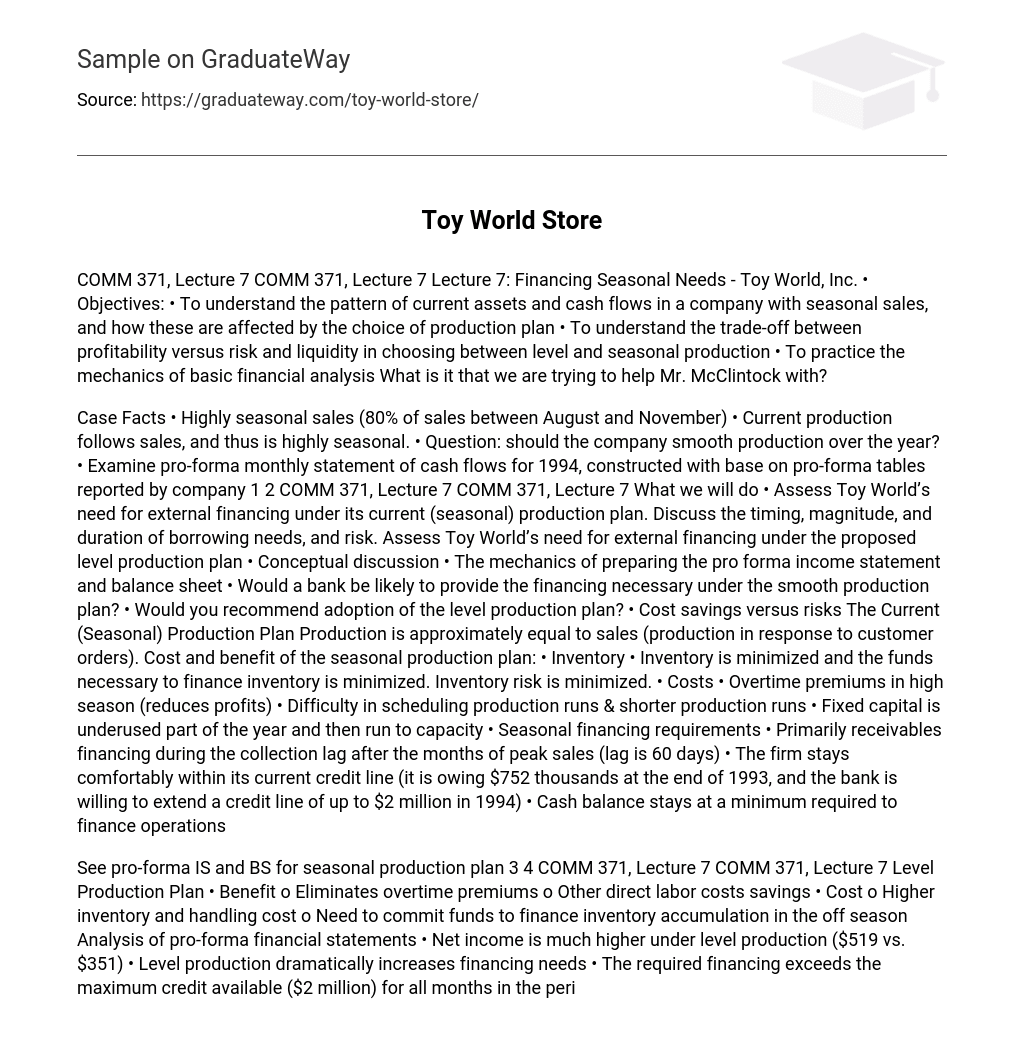Objectives:
- To understand the pattern of current assets and cash flows in a company with seasonal sales, and how these are affected by the choice of production plan
- To understand the trade-off between profitability versus risk and liquidity in choosing between level and seasonal production
- To practice the mechanics of basic financial analysis
Case Facts
- Highly seasonal sales (80% of sales between August and November)
- Current production follows sales, and thus is highly seasonal.
Assess Toy World’s need for external financing under its current (seasonal) production plan. Discuss the timing, magnitude, and duration of borrowing needs, and risk. Assess Toy World’s need for external financing under the proposed level production plan. The mechanics of preparing the pro forma income statement and balance sheet.
Are there any alternatives? Sell receivables or offer them as collateral for a bank loan. Also tighten credit policy to customers to induce quick repayment. However, in July when financing needs are highest, accounts receivable are only $300, so not much collateral can be offered. Tighter credit to customers can reduce sales.
How about asking suppliers for an extension of payment time? However, AP are $250 per month, so even if credit is extended to 90 days, this would only generate payables of $750. Would suppliers extend credit? A production plan half way between seasonal and level production. Should the bank extend the loan? The firm needs a credit line of up to $4 million in order to finance level production.
Plus: firm financially healthy. Even if the firm absorbs inventory losses for one year, it can repay early in the next year.
Minus: substantial increase in firm risk. If sales forecast is not correct, the accumulation of inventories can wipe out the cost savings.
Trade-off between profitability and liquidity o Level production increases profitability o But involves the risk of committing funds to inventory in an amount that exceeds the firm equity! 9





